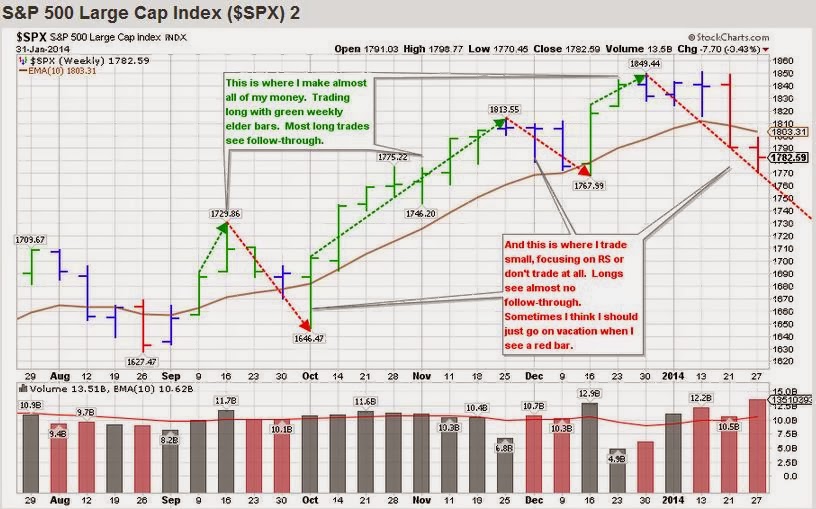Even when I was in grade school, if I didn't know the answers to a question cold....even a multiple choice question....I'd guess wrong. Every single time. You would think just based on random chance and maybe a tiny bump by just being present in class and learning through osmosis that I might get a few right. Nope. 100% chance that I will guess wrong if I don't know the answer. Statistically, I would have been much better off just choosing "C" for any multiple choice answer that I didn't know. I probably would have saved a bunch of time in the process, too.
But that's how I seem to learn best. I make mistakes, learn from them, and then go forth and make still more mistakes and learn even more. It's a slow sometimes painful process, but in the end, I'm better for it because I learned something.
As an authority on mistakes, I can say with some degree of certainty that one of the easiest (and best) kind of mistakes to avoid is "unforced errors". These are the absolute worst. You can't win at sports if you make too many of them and the same applies to the rest of life and stock charts, too.
Here's a few unforced errors that I've seen in recent weeks and how to avoid them:
#1. Failure to look at the date. It seems obvious, but I've seen some very talented investors overlook such a simple thing. It's easy to do, too. Here's the most common set-up: end-of-day charts update at the "end of the day" (obviously). However, that doesn't necessarily mean 4:01P. It might mean 6:38P or 7:02P or whatever. Looking at old data which you think is current can be costly. Check dates!
#2. Bad data. This one has saved me a bunch of times. In the chart below on AKS, you'll see a HUGE spike in On Balance Volume based on....well...absolutely nothing. This indicator spike is totally bogus. There is no movement in the price or volume chart to justify such a print - yet the spike is there. The math doesn't add up, yet the charting software shows a "bullish" move in OBV. It's important to have a general sense of how indicators are constructed and what makes them move. When you see a large spike without underlying price or volume movement, be very cautious and check out the same chart on other time frames with other indicators or use a different charting software to confirm!
#3. Adjusted vs. unadjusted charts. Stockcharts "adjusts" its default charts to correct for various dividends, distributions, splits etc. There are equally vigorous proponents and detractors of such an approach. The important part is to be aware of this fact - especially with high dividend paying stocks and ETFs. The "adjustment" will cause these stocks and ETFs to appear stronger than they would be "unadjusted". This in turn makes them show up more frequently on bullish scans (SCTR rankings, too) and also can fool you into thinking they are breaking out on price charts like with AMLP. To chart "unadjusted" stocks and ETFs, simply put an underscore before the ticker like this "_AMLP". (See chart below). Use the underscore in high yield tickers on stockcharts.com!
#4. Indicator construction. This is a subtle one, but it can be important. You need to have a general idea of what an indicator is measuring in order to be able to interpret it correctly (as in the OBV example in #2, above). Here's another one that I see sometimes. A 9 period EMA is different than the Tenkan-sen 9 period line on a cloud chart. They are not the same at all. They measure two different things. An exponential moving average is not the same as the average of the past 9 highs and lows. It's easy to demonstrate this by plotting both on the same chart to see how the overlap (or not). If you think you're shorting a break of the 9d EMA and you're not, then that's a problem which can effect your P/L. Know what you're looking at!











